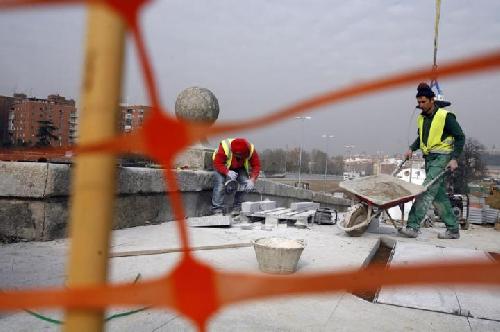Small and medium-sized Spanish construction firms prioritize securing contracts and production over any R&D activity. These firms are focused on their day-to-day responsibilities and do not dedicate time to generate creative ideas. Their technological improvements arise as a result of problem-solving at the construction site. However, these innovations are not reported or shared with anyone, leading to their eventual disappearance, according to a study carried out by the Polytechnic University of Valencia.
The construction industry in Spain is not living through the best of times, affected by the financial crisis and the bursting of the real estate bubble. Nonetheless, large companies have been able to diversify, to find business opportunities in the international market and dedicate resources to innovate -- tasks which prove much more difficult for small and medium-sized companies whose main goal is to stay afloat in a hostile environment. This is the conclusion of a research study conducted by the Polytechnic University of Valencia (UPV).
Eugenio Pellicer, a Construction Engineering professor at UPV and one of the authors of this study, told Sinc that "the companies in this sector work on contracts that are time limited, generally only a few months long, and they need to secure a minimum number of contracts each year in order to survive; especially the small and medium-sized construction firms. These companies -with limited product and market diversification- give priority to obtaining new contracts and production over any other activity".
 The site managers are aware that they are innovating to solve problems that arise at the construction site or to meet customer requirements, according to the study. Credit: Olmo Calvo / Sinc
The site managers are aware that they are innovating to solve problems that arise at the construction site or to meet customer requirements, according to the study. Credit: Olmo Calvo / Sinc
Pellicer stresses that the directors of small and medium-sized construction firms "are completely focused on making production profitable for the firm and satisfactory for the client, meaning that they devote most of their efforts to production planning and control while putting little weight on everything else. Consequently, they do not have time for other activities such as reflecting on tasks carried out or recording and sharing those which were innovative", he adds.
Large firms, on the other hand, have been managing their innovative endeavours for quite some time, driven by public support, Aenor certifications and certain tax benefits.
Process improvement
Implementing a model that improves the processes of innovation and knowledge acquisition could be the solution to helping smaller firms overcome their disadvantages. In order to study the best way of implementing such a model, researchers from UPV analysed the management system of a medium-sized construction firm over the course of nine years.
"It was really interesting to get the sense that site managers are indeed conscious of the fact that they are being innovative, mainly to solve the problems that arise at the construction site or to satisfy client requests. These are technical improvements that occur from time to time and are born out of the necessity. Their problem is a lack of time-in addition to a lack of recognition by company management-that holds them back from reflecting, recording and properly sharing those innovations", points out the professor.
Nonetheless, we are starting to see some changes. "The additional importance that public agencies have placed on innovation in bid solicitation documents since 2005 -by assigning a specific score to innovation equalling between 10% and 30% of the total score for public tenders-has caused company directors to start changing their attitudes", he adds.
Systematising innovation
During their analysis, researchers observed that support from upper management to the technicians carrying out the construction work was paramount to motivating the organisation as a whole, as well as to introducing changes that aided in systematising innovation.
"By making simple modifications to some procedures, site managers were properly notified about troubleshooting cases that were likely to become a source of innovation -he adds-. This way, they received attention and support from the company's central services in order to find the best solution, record it and properly share it".
With regard to recommendations, Pellicer points out that having a department dedicated to innovation is highly desirable, but that "given the size and resources of these companies, having someone in charge of this area who can be identified by the rest of the staff is sufficient", he comments.
External support
Bearing in mind the limited resources of small and medium-sized construction firms, Pellicer believes that considering the use of external support from consultants and collaborators is necessary.
Finally, he adds, it is very important to inform all company personnel, collaborators, suppliers, subcontractors and clients about the results that have been achieved, as well as the individuals who have contributed to accomplishing them, emphasises the engineer.
The UPV's research is part of a three-part study that aims to improve the innovation management processes of Spanish construction firms.
source: FECYT - Spanish Foundation for Science and Technology